Text
Week 11
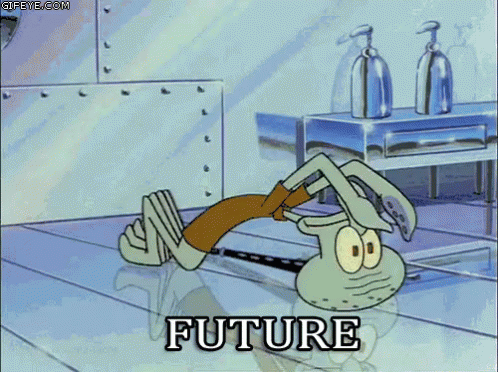
The media and how we interact with it is evolving and our experience is with them has changed as a result. The digital age has made interacting with media producers as easy as thinking about it. We have phones that could access whatever the media producer suggests us to see. They have taken advantage of the space on the internet and have created other media platforms that work to reflect the content that they create, whether it be television or film. For example, transmedia allows television audiences to interact with media products related to their main products. According to Sullivan (2012), “(Transmedia production) refers to the coordinated use of multiple media platforms (or technologies) to craft a narrative… unlike traditional storytelling in a single medium like television, film, or books, trans media narratives open up the possibility for audience participation and dialogue with media producers” (p. 241). In essence, transmedia refers to using more than one form of media to create continuity for as it is told across multiple platforms and therefore creates more user engagement with the story. This helps create further investment into the brand as users spend more time with the brand and its media products. The more time you spend with a brand, the more you may identify with it and therefore transmedia acts to create long-term fans. For example, I used to (still do really) watch SpongeBob SquarePants growing up. Now this was before the smartphone, but nickelodeon still had an active website with various transmedia products that were associated with SpongeBob such as games on the nickelodeon website. The site also had SpongeBob related videos, quizzes, and other activities. I even bought the SpongeBob SquarePants video game for my Gameboy. There was also this arcade SpongeBob console that was an extension of season 2 episode 30 called “the fry cook games”. There were also SpongeBob SquarePants books and comics available that I would borrow from my local library. There were also two SpongeBob movies that were released by Nickelodeon. As you can see, even while growing up, I was immersed in transmedia storytelling. This helped to build my association with the SpongeBob brand as well as its merchandise. It started off with free content, but as I build a strong relationship with the brand, I felt compelled to support the brand by consuming its products. I saw the products as targeted to SpongeBob fans. I associated my identity with being a fan of SpongeBob and therefore felt obligated to purchase and consume the brand’s transmedia products. In short, transmedia storytelling is an effective way at maintaining user engagement because it prompts fans to act on their identification with the brand by consuming all of its transmedia products.

As competition within media industries continues to grow and the number of media niche markets continuous to grow, we are expected to see a polarization of audiences and fragmentation within the media industry. According to Sullivan (2012), “fragmentation of our media landscape is also leading to audience polarization because individuals are beginning to avoid media content that they find distasteful or offensive… this could have serious long term sociological consequences by isolating us from one another and thereby decreasing the public’s tolerance for diversity, cooperation, and mutual respect’” (p. 243). In other words, smaller niche markets are popping up left and right, and their fan bases are only going to grow as well as the number of niche markets available. As more and more people consume from these niche markets (fragmentation of mass media), it will be harder to market to just one mass media population as niche markets are dividing up or compartmentalizing this massive audience which is what “polarizing of audiences” refers to. So whats the big deal? What does fragmentation really change? Well, according to Sullivan (2012), “some scholars have argued that fragmentation of our media landscape is also leading to audience polarization because individuals are beginning to avoid media content that they find distasteful or offensive… This could have serious long-term sociological consequences by isolating us from one another and thereby decreasing the public’s tolerance for diversity, cooperation, and mutual respect” (P. 243). We are already seeing such a divide as social media use is partly to blame. So, on social media, one can control what they see by following certain accounts. What I tend to do is follow accounts that I agree with. However, what may end up happening is that my opinions are not challenged by opposing views and therefore I become less susceptible to changing my mind or growing my understanding about a particular subject. This creates a collective way of thinking (groupthink) that is isolated from opposing views. So for example, if I consider myself right wing in terms of the political spectrum, it makes sense for me to follow other right-winged people. However, then I am not exposed to other perspectives. So seeing only right-winged posts would only strengthen your belief in the position while making you less susceptible to growing your opinion by challenging it from time to time.
0 notes
Text
Week 10
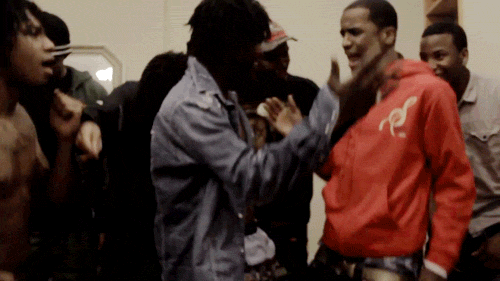
I remember going on Twitter as a freshman high school student and finding the link to a music video. The video was a link to the song “I don’t like” by Chief Keef. At the time, Chief Keef was no celebrity. He was just an ordinary sixteen or seventeen year old gangbanger from an inner-city neighborhood in Chicago. He got in touch with a kid in his neighborhood known as Young Chop. Young Chop’s older cousin taught him how to use FL studio, a beat making software. Chief Keef wanted to start rapping so one day he went over to his house. Young Chop made a beat for him which he has stated in an interview took him fifteen to twenty minutes to create. Chief Keef recorded his vocals onto the beat and invited his friends over to his house to shoot a music video since he could not leave his house as he was on house arrest. What is significant here is that these kids created a viral song that took no significant time, energy, or financial resources to make and created careers for themselves within the music industry as a result. He is now commonly known as the father of Drill music, which is a subculture of hip hop. One thing clear with this story is that having these digital technologies such as computers have evened out the playing field to an extent, as more people are able to produce digital content and claim themselves as producers and content creators. According to Sullivan, “what’s remarkable about these examples is the relative ease with which unknown artists can create their own cultural materials and circulate them to millions of people at a time via the web, effectively bypassing the institutional gatekeepers in the traditional media” (p. 214). So, digitizations has allows consumers to be able to not only create content inexpensively but potentially be able to distribute it with out relying on traditional media outlets. Consumers are now able be producers, hence the term “prosumers”.
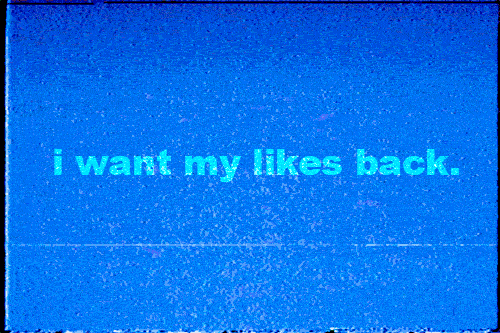
Although the prosumers have this great ability to produce and distribute independently, they are also being exploited for their efforts. Online activities such as engaging in social media by liking, commenting may seem like effortless way to interact online. What tends to be overlooked is the fact that online activities generate user data that is stored and sold by outlets to advertisers. According to Sullivan (2013), “the free exchange of ideas, information, and creativity is part of the larger “gift economy” of the internet… on the other hand, this freely distributed creativity has been increasingly monetized by corporations, transforming it into essentially free labour” (p. 232). For example, If I like and follow multiple Instagram accounts on Instagram, I am generating data that tells one about my interests and potential future consumer habits. This data can then be monetized and sold to a shoe a brand company such as Nike, in which Instagram would know which of their users to show Nike’s ads to since they can use the data to understand which of their users fit under Nike’s target demographic. We are generating valuable information to Instagram without being compensated for our labour while Instagram uses this user-generated labour to make profits. This is how Instagram users can be seen as being exploited.
0 notes
Text
Week 9
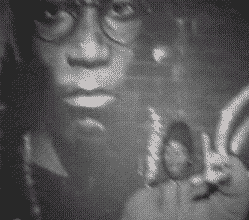
We are all consumers, not doubt. However, as one develops a continuous pattern of engagement, their intensity with the engagement process may develop into production and reproduction. Sullivan refers to this phenomenon as the continuum of fandom (p.194). A person starts off as a consumer. In other words, one starts off as simply learning about the text and not being a fan while passively consuming. In this process, one learns about a text or the consumer may just not like the previously consumed text as their passivity suggests. Next, the person begins to have a more active way of consuming the text as they grow their appreciation for it. This is when a consumer becomes an enthusiast. I was a consumer of 90s hip hop growing up. However I did not become an enthusiast until around the 8thgrade as I grew an appreciation for the lyrics and the artist’s of this era’s ability to tell stories in their music. My enthusiasm lead to my discovery of more texts within this era. As I consumed more an more from this era through high school, I became a very active consumer which led me to personally identify with these texts. In other words, I had become a fan of 90s hip hop. I started getting bald fades, wearing Jordan’s and t shirts that had prominent 90s rappers and rap albums on them. At this point, this subculture has become apart of my identity. Eventually, I became so immersed in this culture that I felt the need to reproduce content for my own enjoyment since the 90s were over and very few artists nowadays mimick the unique boom Bap style of the 90s. So I started rapping over instrumental beats of the Wu Tang Clan, Big L, and other icons from the 90s. As you can see, I started off as a passive consumer but, my continuous engagement grew my activeness that lead to wanting to produce the content myself.

So, it is clear that not all people are mindless consumers that will consume whatever producers throw at them. If many active fans are drawn to a particular text, fan culture arises. Growth in this fan culture can even give it power. According so Sullivan (2013), “close-knit communities of fans can offer direct challenges to existing authority… Fans can be mobilized to press producers and media corporations for change (or, as it is more often the case, to prevent changes from coming about in a favorite media text)” (p. 196). So, fans can potentially have the power to influence how a particular text is to be created by sharing their expectations. An example of such fan activism that I was an audience member in was the discontent towards the final seasons of Game of Thrones. This show is used to being praised by critics. However, during the final season, it also received some of its worse reviews. Critics were not the only ones disappointed. The Game of Thrones fandom was outraged. Everyone that I talked to about the show was filled with anger and disappointment. It got to the point where there were multiple petitions that went viral that demanded for better writers and a rewritten script as the writers were labelled as “incompetent”. Disney even reconsidered hiring the pair of writers for their Star Wars films as the backlash was overwhelmingly large. It is clear that fandoms allow power to the consumers as they can use fandoms to address issues about the show that can trickle down to producers if the fandom prioritized the issue by generating content or discussions of it.
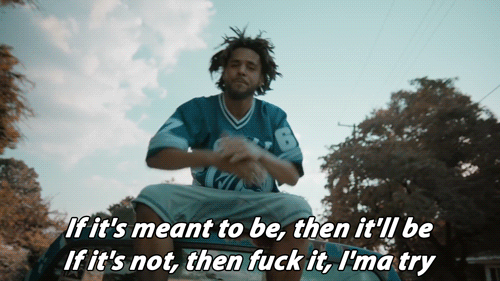
So this leads to a close look at patronage and how it affects the creative process of the artist. Sullivan (2013) mentions the idea of Henning (1960) about the existence of three processes that patron groups influence artistic style including stipulation, attraction, and selection. Sullivan describes these processes as he states that, “Stipulation is simply those direct orders from a patron that an artist must follow, attraction is the ability of patrons to bring artists to their point of view through financial support and a sympathetic intellectual climate, and selection is the choice to support works of art that meet particular psychological and aesthetic needs” (p. 213). When an artist signs a record deal, the artist now has a relationship with a patron. The record deal may have stipulation contained within the contract such as a number of album that the label requires the artist to produce, tours that they must go on, and so on. The selection process is where an artist’s art can be undermined for the perceived needs of the consumer. This is what happened to J Cole after signing with Roc Nation. The label believed that the songs that he made for his debut album would not sell. Frustrated that his patron was attempting to involve themselves within his creative control, he releases the songs that he proposed to put on his debut album and more on to a mixtape titled Friday Night Lights. The mixtape was released to the public for free via the internet. That mixtape blew up and was one of the highest searched for mixtapes at the time. It even drew the attention of critics as it was generously praised. It makes me wonder how many albums may have been stopped from being released from the influence of patrons? It is clear that the artist has a finite source of control as it has to rely on external factors such as patrons. It makes one wonder how authentic artists really are. Do they release music more so to please themselves or to please fandoms, consumers, and patrons in order to generate financial success? Who Is an authentic artist and who is simply there looking at their artistry as just a job made to please others?
0 notes
Text
Week 8

There are many factors that go into how we interpret media texts. One that I have always overlooked is the setting that you consume it in. I’ve talked about how your previously held notions and beliefs have an impact on how you interpret media texts. I will now look at how physical, social, and time contexts can affect your experience with the text.
Physical context refers to your surroundings when consuming media texts that can affect your viewing experience. According to Sullivan (2013), “You may be watching an episode of the ABC television series Lost in your dorm room with a friend, in your living room at home with parents and siblings, or alone with your headphones plugged in to your portable media device (such as an iPod or mp4 player)… Although you are viewing the same content in each of these examples, the experience that you are having as a viewer can be radically different because of the dimensions of the technology (a tiny three-inch screen versus a large 50-inch screen), and because if the other people who regularly inhabit those spaces with you” (p. 163). In other words, how you interpret a media text varies from place to place because of technological elements such as screen size, audio systems, even the people present. In my experience, witnessing a sporting event in a theatre setting drastically varies from watching it at home. Kim, Kim, and Cheong came to the same conclusion in their study that attempts to understand the differences in viewing the FIFA World Cup at home or in a theatre setting. According to Kim, Kim, and Cheong (2016), “by experiencing sports in movie theaters, viewers can become fans of the sports at a faster speed than when they view the same event at home…This is because movie theaters exaggerate and intensify the affective impacts of the sporting event, making the sports more memorable” (p. 404). As stated, they came to the conclusion that watching sports in movie theatres encourages people to become fans of a sport faster than watching it at home due because the theatre helps intensify the engagement with the sport. I have felt this intensification as well when going to Jurassic Park during the finals. During the Raptor’s championship run last season, the demand to watch the games live at Jurrassic Park increased drastically as many more fans desired to watch the winning home team in action. Jurassic park was then forced to expand into the city streets as giant television screens were placed throughout the city and roads were blocked specifically during the Finals so that these city blocks could be left alone during the events. I had been previously watching the games in the comfort of my home, usually on my laptop. I would be very silent during the games and often found myself multitasking while viewing, as well as having the volume on low. In the home setting, it is easy to stop viewing and pick up another activity while I was more engaged at Jurassic Park since I went to this place with the intention of just viewing the event. In other words, the intention of watching the game outside of the comfort of my home encouraged me to engage with the text with greater intensity since it was my sole purpose of being there. Also, I was engaged with the text with more intensity because of the physical context of the event. The monitor was huge compared to my laptop screen. You could not miss the game even if you were a couple of intersections down. You can hear the game from blocks away. The size of the screen and audio system helps intensify engagement because this way, the visual and audio quality were enhanced compared to my laptop screen and speaker.
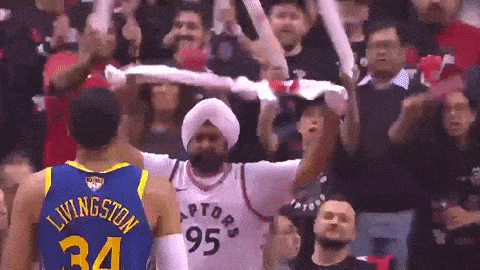
The enhanced quality of the text as well as the loud atmosphere of Jurassic park replicated the experience of viewing the game live and therefore, intensified my engagement with the text. I found myself becoming vocal when reacting to plays compared to watching in silence at my house. The presence of my friends also sparked side conversations that I would not have if I watched the game at home and therefore, their presence only enhanced my engagement with the media text. This relates to the social context of media consumption. According to Sullivan (2013), “Reception spaces are partially defined by the people and relationships that are found there… Your home, for example, is not simply a physical structure with living spaces, bedrooms, and bathrooms; it is a dynamic, multifaceted space that encompasses people (family and loved ones), relationships, and vivid memories of past experiences” (p. 163). In having my friends present strengthens the bond I had with the game because the space where we are consuming the text also happens to be significant in our relationship because we are creating memories with each other. This event serves as a reference point for our friendship as well as an experience with media. But, not only does media have an effect on social relations, but it is important to note how social relations have an effect with how you interpret the text. I mentioned how I had side conversations with my friends about the game that enhanced our experience with the text because it allowed us to share information about the text such as who is performing well and who needs to step up within the game. If I was at home, I would not consume the text in this way. In short, the way you consume and interpret media texts relies on the social context within the environment that up you are consuming the media.
0 notes
Text
Week 7

The media industry is constantly bombarding information to mass media audiences. It is clear that there is a process of communication involved with such an interaction. But what is really going on in such a subtle projection of information? The development of ‘Saussure’s Dyadic model of the sign’ is one such attempt at deciphering what goes on between the exchange of information between audiences and media outlets. As mentioned by Sullivan (2013), “signs are defined by the interaction between two specific elements: the signifier, or the form of the sign, and the signified or referent, which is the concept the signifier represents” (p. 137). In other words, the letters that make up a word are the signifier while the meaning assigned to the word is the signified. This means that the symbols are arbitrary to the meanings that we interpret them to be. Sullivan also goes on to mention that, “the connection between signs and referents is not given or ‘natural,’ but is instead the result of human social relations and the rules of particular symbolic codes… since the connection between signs and referents is never natural, it is therefore always changing and subject to power relations” (p. 138). So, signifiers can also change over time as people reassign a different signified meaning to a particular signifier in order to fulfill the need of accurately expressing themselves in a manner that reflects their perceived identity. The work of Shakespeare reflects this as the English language was quite different during his time. Another example that successfully shows the difference between the signifier and the signified is the show Topboy. This show reflects the urban culture of London and incorporates various popular slang words and phrases that are commonly used. ‘Wagwan’ is one such signifier with a Jamaican origin that signifies, ‘whats going on’. This suggests that words are meaningless on their own. In order to communicate using symbols such as language, one must learn what they signify. Words are also often reassigned different meanings in the show. For example, the word ‘food’ signifies drugs. Although the word food to the majority of English speaking people means eatable items, the signifier in this case is altered to mean something else for this culture of people.
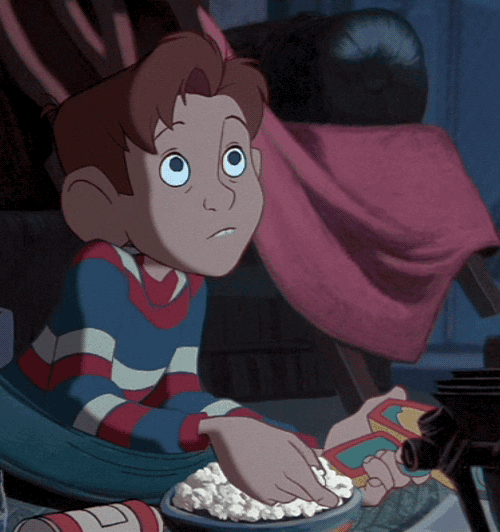
Saussure’s Dyadic model of the sign explains how texts are assigned meaning, but how are they used by the media giants that have developed over the last century and what purpose do they serve? Marxist theorists such asHorkheimer and Adornohave attempted to explain such phenomenon using the classic Marxist approach. They are critical of the lop-sided power dynamic between the gatekeepers of the media industry and its audience. As mentioned by Sullivan (2013), “(Horkheimer & Adorno) identified modern media such as radio, television, and magazines as purveyors of industrialized, standardized culture meant to lull the masses into passivity and acceptance of the economic status quo… They classified this process of manufacturing dominant ideologies as the culture industry” (p. 138-139). Basically, the media is seen as an ideological state apparatus as it is assumed to normalize the status quo by reinforcing dominant discourses. This idea of using media as a tool for control is further developed by Marxist theorists through the formulation of screen theory, seems to suggest that film is a powerful enough to change one’s sense of reality. Sullivan (2013), comments on this phenomenon as he states that, “film viewers’ sense of reality, then is essentially controlled via the ‘imaginary unitary,’ and viewers are subsequently unable to separate themselves from the film’s reality because it becomes invisible and normalized… mainstream media representations also reinforce the bourgeois status quo through narrative and visual strategies, thereby forestalling any attempt by the audience to subvert the text” (p. 139). In essence, they claim that in the act of viewing a film, the audience forgets that they are watching a film and begin to position themselves within the narrative. Because of their perceived involvement within the narrative, they may be prone to accepting dominant discourses found within the film to the point that they carry them into their real lives. For example, in FILM 3P50, we watched a show from the fifties known as I Love Lucy. In the episode that we viewed, the men and women decide to switch their roles. The women attempted to be breadwinners while the men attempted to be housewives. Both failed miserably so the show concluded with them agreeing that women should stay in the kitchen while the men should carry on being bread winners. The show clearly attempts to normalize gender roles which was one such dominant discourse at the time. Screen theory suggests that a film viewer would picture themselves within the plot and be prone to accepting their proposed ideologies since they are normalized.

Although screen theory does attempt to explain possible motives behind the production of media within the mainstream, the existence of counter cultures contradicts the idea of audience members mindlessly accepting dominant discourses even though it is definitely possible. The encoding and decoding model however takes on this role of explaining how audiences engage with and interpret media texts. The idea of a decoding process is especially relevant to the way the audience engages with texts. According to Sullivan (2013), “The encoding process transforms experiences and ideas into meaningful discourses within existing social, economic, and cultural contexts… decoding is therefore both a creative and a social practice; creative because the message receiver brings to bear his or her own cognitive and associative resources to the deconstruction of a message and social because the receiver is also informed by larger meaning structures such as language, community norms, and cultural conventions” (p. 141). What this means is that in order to interpret a text, one must recall on their sense of self and others, as well as perceptions of previous experiences with the related subject, or recall on prior assumptions that they have associated the subject with. That way, this new experience with the subject builds on to their overall understanding of the subject. This includes building their understanding of assumed cultural, communal, and linguistic expectations and their position within these expectations. This idea suggests that the audience may not be mindless sheep after all since they have the capacity to provide their own reasoning for consuming texts and interpret their messages in their own way and for their own purposes. Sullivan (2013) included a case in his text that looked at how homeless people in the shelter perceived Die Hard, and it turned out that they were cheering on the antagonists, which were the terrorists in the film (p. 143). I had a similar experience watching homeless people watch Toronto during the 2019 championship run for the Toronto Raptors. I went to the city to watch game one of the NBA Finals. T shirts and other various merchandise were being distributed for free in order to get people to show love to the home team. During the pre game segment, I saw a homeless man at an intersection booing Raps fans that walked passed him as he cheered for the Golden State Warriors. My cousins saw this man in disgust and wondered why he would do such a thing. It occurred to me that the man has his own reasoning for interpreting the spectacle that took place within Toronto during the Raptors run in the finals that is based on his own experience and understandings that he’s developed over his life. The team represented the city that have neglected him. Why would he show them support when the city has failed to support him? This may be why the people at the homeless shelter cheered for the Terrorists in Die Hard as the textbook mentions. They may see themselves as antagonists as well since it does not appear to be uncommon for homeless people to have negative connotations associated with them in mainstream media representations, and therefore they may identify with the antagonists. Although this may not be the reason for the homeless man’s support for the opposite team, the point is that people consume media for their own purposes and interpret the texts in their own ways and for their own reasons.
0 notes
Text
Week 6

The act of watching basketball with my friends is one of those shared interests that is essential in maintaining our friendships as it enables us to spend quality time with each other. However, it has occurred to me that although we share a love for watching basketball, our motives for watching basketball differ from one another. The uses and gratifications approach attempts to explain this phenomenon as Sullivan (2013) states that this approach assumes that, “audience members actively choose media channels and content to suit their own needs at a particular moment” (p. 113). In other words, the audience uses media for their own purposes in order to satisfy their own personal needs. I watch basketball games for many personal reasons other than seeing it as an outlet to socialize with my friends. I have been playing basketball my whole life so watching professional basketball games helps me understand the game more as a player since I am able to pick up on playing styles, moves and plays. On the other hand, one of my friends watches basketball as it serves as a distraction from his routine life. He has never picked up a basketball in years but gets enjoyment from the games as it is a form of entertainment for him. A cousin of mine has a different motive for watching the games. He is in various competitive fantasy leagues that require buy ins. He watches basketball for the enjoyment he gets from watching his fantasy players earn him stats while also seeing the games as a long term investment since he is financially involved. All three of us watch the games for different reasons but enjoy watching them just the same. This is an example of how audiences utilize the same form of media for different uses in order to fulfill different desires which reflects the uses and gratifications approach to looking at audiences.

With the rise of the digital world, there are now other ways to attract audience members to engage with media texts because of the unique features that digitization provides. These new features of engagement generate new gratifications that are sought after by audiences. How audiences engage with digitized content has led to many observable advantages of having a specific ways of presenting information. As mentioned by Sundar and Limperos (2013) when looking at modality-based gratifications, “Research indicates that presenting information in multiple modalities is not simply convenient, but also perceptually and cognitively significant… the visual modality is more trusted than text, i.e., pictures cue the ‘realism heuristic’ leading us to quickly conclude that if something is photographed, then it must be more real than if it is simply written about in textual form” (p. 512). In other words, having more than one way of interpreting information such as the inclusion of written text as well as visuals is preferred by the average viewer. In fact, visuals have gained more power in terms of convincing audience members that something is true. I have also made this observation as I have noticed a trend in high school where some students would be obligated to send their parents a picture text of their surroundings in order to give their parents assurance that they are where they claim to be. Some have even taken it a step further by requesting that their child Facetime them instead of giving them a call. This shows how people can be skeptical when it comes to text but visuals such as picture are perceived to some as irrefutable. However, this can be problematic since pictures can easily be altered by photo editing software such as photoshop. Photo editing is also becoming more accessible to the public as we are seeing with the development of social media filters.
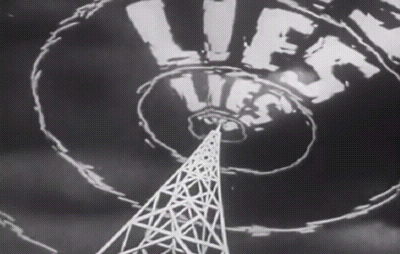
Therefore, it can be argued that the average audience member’s trust in visuals can be seen as a flaw since they can be prone to manipulation because of the ability for anyone to alter visuals in this digitized world. When we look at digital news articles, they are often paired with videos that explain the article. Media outlets are already starting to take advantage of including visuals. For example, news outlets often have the same material from article placed into a video format that is found within the same web page. This suggests that some viewers are expected to skip the text and watch the condensed form of information through a video that portrays the same message but with the inclusion of audio and visuals. Many have abandoned traditional news outlets entirely and rely on social media websites to display news posts with multiple modalities. As a result, during the last American election, fake news was heavily pushed on to social media platforms such as Facebook and this trust in visuals backfired as people were spreading and believing fake news as facts. It is clear that multiple modalities are helpful in sparking audience engagement but it also causes problems since using multiple modalities can be used to spread propaganda.
0 notes
Text
Week 5

Before taking this class, I saw my adult self as an audience member that saw his experience through the lens of audience-as-agents. However, as a child, I can definitely admit that I lived through the audience-as-outcome lens. Whatever information seemed to be apart of my environment, I would soak it up without a second thought. It is safe to say that I was quite an impressionable child. I spent a lot of time looking for products to consume. One way I would do this is by watching movies that were rated the highest. My process for watching a movie would include scrolling down the IMDB’s top rated movies of all time list. By doing this, I was not making my own judgement as to what makes a good movie but relying on the judgement of professional critics and gatekeepers to inform me of what a good movie was. I noticed that the majority of movies on there have done tremendously well when it comes to sales as the majority of movies appeared to be arguably blockbusters. However, an important question arises from such a practice; are people making these movies popular or are the gatekeepers through ads and international distribution campaigns? The same questions can be asked about radio. According to Buzzard (2015), “advertisers sought to quantify audiences in order to assure the success of their advertising efforts” (pg. 513). In other words, they only saw the audiences as numbers. So, naturally, the hottest music is expected to be played by advertisers in hopes of increasing the audience size. This has lead to my realization of commercialization at a young age as I began to notice the same few songs on the billboard 100 being played throughout the day on major radio stations. It now makes me wonder whether the songs are really that good that people enjoy listening to the songs that much or if radio helps maintain the popularity of a few artists while neglecting the majority of musicians worldwide that are not affiliated with the mainstream industry in order to sell mainstream audiences to producers. Are ratings a reflection of a mass audience or are they used to sell products funded by media conglomerates? In other words, are audience members viewed more accurately audiences-as-agents or audiences-as-masses?

In my teen years, I was into sneakers. I spent a lot of time on social media looking at shoes that I would like to buy myself. I saw this time spent as leisure time. Although, I have previously said that I see my role as an audience member through the audience-as-agent lens. However, the role of media producers in nudging consumers towards making purchases is beginning to look more powerful than I had anticipated. For example, by liking pictures of specific shoes, I am generating data for businesses that they can use to determine whether I am apart of their target audience. This can be seen as labour instead of leisure since I am producing valuable information as an audience member that can be used to nudge me into buying items that are similar to what I am used to viewing. According to Sullivan (2013), “while we are socialized to think that our media consumption is primarily a leisure-based activity, Smythe suggests that audiences continue to generate economic value to the system of commercial broadcasting by internalizing advertising messages and turning them into demand for consumer goods and services… Smythe described the phenomenon of audience labor as the ‘blindspot’ in Western Marxist thinking” (pg. 81). Although we spent our leisure time doing things that we may enjoy doing such as engaging with social media, we are generating valuable information that is sold to advertisers to create niche market ad campaigns online. Although we are generating information, we are not compensated for our labour and are unaware of the value that we are generating hence, the term “blindspot”. This is a significant power struggle that does not hold corporations accountable for their exploitation of information. As an audience member of sneaker accounts on Instagram, I then began to be targeted the same sneakers that I would like on Instagram.
0 notes
Text
Week 4
My friends and I have a group chat on Twitter where we share posts amongst each other and sometimes, discussions arise from them. One of my friends in the group chat retweeted a tweet outside of the group. The tweet was a response by Ellen to fans who expressed their views on Ellen spending time with former President George W Bush Jr at a football game. The fans were upset that she was spending time with such a negatively perceived public figure. She responded by posting a video that states that you should set aside political differences and be kind to everyone. An anonymous account picked the video up and reuploaded it with the caption, “if you disagree with Ellen, you’re apart of the problem”. I so happened to disagree with this philosophy as George Bush is a war criminal that has attacked Iraq and has sent many innocents to be tortured for intel under his leadership.

I decided to share the same tweet into our group chat while stating that an apology is due before anyone should even think about being kind to a person behind such evil crimes. Everyone in the chat agreed while the friend who initially posted the tweet. Although he initially shared his support with this tweet, he became hesitant to share his unpopular oppositional view online. This may have been a phenomenon that is exclusive online as studies suggest that people are more comfortable expressing their views offline than online. According to Neubaum and Krämer (2018), “Subjects’ likelihood to express their opinion and express ambivalence was greater offline than online… Likewise, participants were more inclined to say nothing online than offline” (pg. 152). Initially, I believed that it is easier and safer to express your opinion online because you are protected by a screen. However, what you say online has a sense of permanence because it can be found online years later. For example, celebrities like Kevin Hart have been accused of being homophobic for tweets from almost a decade ago. You can formulate an opinion and respond on your own time without being put on the spot in person. However, I have realized that your opinion expressed in real life can be forgotten meanwhile, you can be held accountable for your opinions online because they are visible for all to see and challenge. I believe that it is not necessarily easier to be understood in person, but if one is misunderstood in person, then they can explain their position in real time. However, in online settings, if one is misunderstood, then they may be misunderstood for a longer period of time if the person does not reply right away. Perceived as being misunderstood can give people fears of becoming negatively perceived. This may be a reason why people may be more outspoken in real life. According to Neubaum and Krämer (2018), “In online realms, one can easily quit the platform and therefore leave the social situation when it becomes uncomfortable… if a person anticipates a risk of building a bad reputation and losing important relationships after expressing his or her opinion on a controversial topic, he or she rather engages in avoidance strategies than stand by his or her real opinion” (pg. 158). In other words, you may be prone to more consequences when stating opinions online as anyone can come back and haunt you for it after the fact. When I asked the friend who tweeted the post out as to why he did not respond, he simply said that he knew that his opinions would clash with ours and that he did not want to be negatively perceived by us. This caught me off guard because in person, as a group, we tend to not shy away from arguments. However, even when we do argue or debate, we diffuse the situation and always hug it out. We also tend to speak in a manner that shows respect to the other. Online however, we do not see our friend but we only see their symbolic interpretations of their ideas through words and media. The dialogue online lacks non-verbal cues like eye contact and one’s tone of voice that make it easier to suggest friendly conversation to one another. Online however, those same words spoken with kindness and affection can be interpreted as an attack on one’s views as they interpret the message in their head. Online, the receiver interprets the text in their own way while offline, the sender has more control over how the message is delivered. This may be why sending messages online may be perceived as riskier than speaking to friends offline.

Although the friend who tweeted the Ellen video opposed George W Bush for years, he was quickly swayed by a view that challenged what he previously believed. The video spoke to him, especially coming from a figure like Ellen who he has respected for years. Her words of kindness had a sentimental place in his heart as his parents raised him with similar values. However, how was he so easily able to put his political opinions aside to reflect his personal values so suddenly? He may have been a victim to the agenda-setting effect. According to Sullivan, “the ability of the mass media to transfer the salience of items and their attributes from the news agenda to the public was called the agenda-setting effect… more recent studies have demonstrated that media agenda- setting can even trump our own personal experiences in directing our opinions about important public issues”. In other words, the media has the power to sway people’s opinions. This explains how friends and family who ridiculed me for going vegan now see my dietary restrictions as revolutionary now that their media sources have acknowledged veganism as a way for individuals to fight climate change by boycotting the meat and dairy industry. When I tried to explain to them the science behind Veganism, they made fun of me because of what they were previously told to them not only by the media, but by our own government. Growing up, Canada’s nutrition guide had us believe that meat and dairy were an important part to one’s diet. Why would a gatekeeper of information as big as Canada’s nutrition guide spread lies? To my friends and family, this publication was all of the proof that they needed. Even after major studies were conducted in the nineties, Canada’s nutrition guide did not change until very recently. They now urge Canadians to limit their meat and dairy intake. Canada’s nutrition guide’s ability to mislead the same people that it is designed to inform is a perfect example of the agenda setting effect because an information gatekeeper as big as Canada’s Nutrition Guide was able to transfer a misinformed opinion onto Canadians for years.
0 notes
Text
Week 3
A few of my friends and I started watching a popular series on Netflix called Top Boy that shows drug-dealing gangs from London’s housing estates. They seemed to be really enjoying the show. I personally think that the crime genre has shown its fair share of crime organization oriented shows. Nothing came out at me as revolutionarily new. Similar storylines have been depicted in shows such as The Wire , Breaking Bad, etc… However, Top Boy did have its own unique associations with the show such as its own soundtrack that was released by OVO Sound and Warner Records. Various UK drill, Grime, and Hip Hop artists are featured on the album that depict gang lifestyles from London and various other regions. The most popular artist among the artists featured is Drake. In fact, it was his disapproval of the Topboy Summerhouse series getting cancelled that sparked the following for the show and eventually lead to the release of this new Topboy series that dropped this September. Drake went on to Twitter and tweeted his objections to the show's cancellation. His thirty-eight million followers were being sold a television series from a celebrity persona that has clearly established a huge following. I have a close friend named Rav that is a Drake fanatic. He invests time and money into his music, clothing merchandise, shows, social media, even his brand of whisky named Virginia Black. When Drake dropped the name of Topboy in various tweets, he took notice. When he found the show trending on his Netflix, he decided to watch the show. When I talk to friends, I usually take their television show preference very seriously. I assume that Rav has taken his relationship with Drake so seriously that his recommendation for a television show guaranteed the chances of Rav watching the show. This is referred to as worship because of Rav’s excessive amount of time and energy spend with Drake products.

When a celebrity has many followers on a social media, it seems as though they may be prone to having more parasocial interactions with that particular persona of the celebrity that is portrayed in the products that they consume. These products that sell the celebrity’s persona could be songs, albums, music videos, interviews, social media posts, documentaries, etc. They are all available for consumption on the internet. The consumer does not have to leave their house. They could be consuming the product twenty four hours a day if they wanted to. The possibility for worship are always there.

According to Brown, there are four processes of audience involvement with media personae including, transportation, parasocial interaction, identification, and worship. Parasocial interaction is one such process that can occur when interacting with media texts. According to Brown, “Parasocial interaction is the process of developing an imaginary relationship with a mediated persona both during and after media consumption, which begins with spending time with the persona through media or participation in mediated events, and is characterized by perceived relational development with the persona and knowing the persona well”.Brown explains how a persona that captures the attention of a person can stimulate one’s imagination to create a perceived relationship with that person. In other words, Rav sees Drake as a person he knows although, he has never met him in person before. His mind wanders to fantasies of knowing him based on portrayals that have etched a unique perceived persona, created continuously by the consumption of various cultural products of the persona. The relationship between persona and consumer can develop into a very active one way bridge of communication. Worship is on the extreme end of the spectrum where, “making one’s relationship with a media figure (is) the primary focus of one’s time and attention that evolves out of a strong love for that persona” (Brown, 2015, pg. 266). In other words, worship is the act of focusing on a media figure to the point where they bring in consistent contributions of time and energy that in turn blossom into a perceived good relationship with the media figure. In reality, it is really just a carefully constructed image that is being sold to a consumer audience. Not only that, but this image has the ability to sell other products to its audience members. It could be that the stronger the relationship between the persona and its consumer, the more likely they are to think about purchasing the product. Rav sees Drake as a person that has similar interests as himself. Therefore, Whatever he sees Drake consuming or promoting to consume, he thinks of consuming himself. This is why Rav said that he started watching Top Boy. Drake had lured him into invest in the advertised product. Rav’s worship relationship with Drake lead him to become invested into the personas of the characters on the show. This includes the persona of one of the main characters of the show named Jamie. Rav described identifying with Jamie’s persona as similar to his own. According to Brown (2015), “Identification occurs from this perspective when an individual adopts the attitudes, values, beliefs or behavior of another individual or group based on a “self-defining” relationship… media consumers search for personae with whom they want to identify and when they find them, they adopt the attitudes, values, beliefs and behavior of these personae that are already similar to their own or that they are already predisposed to adopt” (pg. 264). Rav has identified with Jamie’s role as a strict older brother that takes care of his siblings as a parent would. Rav had described to me that he looks at his little sister as a child that he needs to take care of. These shared attitudes of family has strengthened the identification between Rav and Jamie. Now, it may be easier to establish other traits of Jamie as his own since he already identifies with him. It got to the point where he would talk to us in a British accent, pronounce words differently, and even use the slang that is found in the dialogue of Top Boy. This is an example of how media personas can be used to influence consumer audiences to buy into brands and products through advertising. Drake has brought a dead television series back into the limelight through promotion and association.

2 notes
·
View notes
Text
Week 2
What does it mean to be apart of an audience? What distinguishes an audience from an ordinary group of people? How does an audience interact with the sender? These are questions that I would like to attempt to understand. The concept of the audience is a fascinating subject that can open one’s view of interpreting various forms of media. Understanding how audiences form and operate can give you a better understanding of how to communicate with one.

One of the most common audiences that I have been apart of is being a student at a lecture. I often pondered as to how to explain what is happening inside of the classroom. Of course, at plain site, one can easily interpret that four hundred students are facing a professor and attempting to articulate what that person is saying, but the communication that goes on between the professor and the students is deeper than that. There are two ways to look at an audience. The first is the transmission view of communication which, “emphasizes the verbal or other symbolic transaction between a speaker and a receiver” (Sullivan, 2013, pg. 3). In other words, there is a speaker that sends a message that a receiver receives. The students in a lecture are the receivers meanwhile, the professor is the sender or speaker. The sender transmits the message by using a transmitter. This the case of a lecture, a professor uses their voice and even a microphone in order to project the message to the receiver. The receiver is the student body’s eyes and ears. However, the message can be disrupted by various external sequences. According to Sullivan (2013), “as the message travels from the source to the intended receiver, it is subject to noise, which refers both to literal interference from other ambient sounds or a rogue radio signal a well as to psychological noise such as any competing thoughts or feelings that may interrupt or otherwise distort the original intent of the message” (pg. 3). In other words, anything that gets in the way of the intended message that is being transmitted by the sender is considered noise. A lecture environment is definitely subject to noise such as one’s phone going off and coughing. I tend to have music playing in my head that I find hard not to think about during lectures. This is also noise since it gets in the way of my ability to receive the intended message of the sender.

The second way of looking at an audience is by using the meaning basing view. In this model, Sullivan (2013) states that, “the interaction between the sender and receiver is an ongoing process… this model regards the meaning-making activity of the receiver(s) as much more significant than the transmission between receiver and sender” (pg. 3). In this view, the sender and the receiver collectively create meaning as the receiver can give feedback to the sender in order to understand the message with clarity. This audience model reflects my experience with seminars more than lectures since questions are rarely asked by students. In the transmission view of communication, the message is sent to the receiver without anticipating feedback. In the meaning based view, feedback is seen as a necessary step in communication between the sender and receiver. That is why I use the example of a seminar since students and facilitators collectively create meaning using feedback as a vehicle for affirming successful content comprehension of assigned reading. However, the integration of Top Hat in lectures helps establish the presence of feedback since students can instantaneously answer questions given by the professor. In this way, a professor can understand how well the class is following along with the course material.

There are different ways in which audiences are perceived. The first model is referred to as audiences-as-outcome. According to Sullivan (2013), “audiences-as-outcome model sees people as being acted upon by media” (pg. 6). In other words, the audience is like a flock of sheep that blindly accepts the discourses presented. When looking at an audience in this way, I can relate to this idea of the audience. I know a few students who see their role as an audience member within a lecture in the way that the “audience-as-outcome” model suggests. For example, when they come to lectures, they simply copy out everything that comes on the screen in the exact words that are portrayed without considering the overarching concepts that the professor is attempting to articulate or whether they agree with the ideas presented or not. This person tends to not look at the lecture as an opportunity to explore new ideas but goes to lectures for the sake of recording the right answers to what may be asked of us in the future. This person sees themselves through the lens of the “audience-as-outcome” model because they are passively accepting whatever information that is received by them.
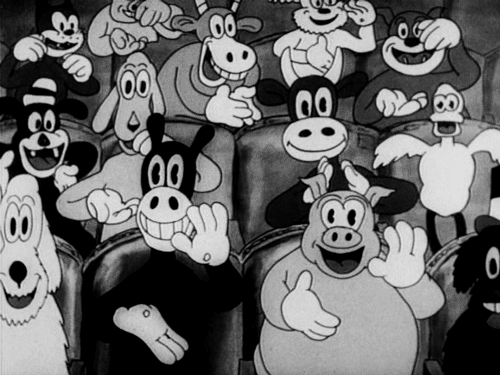
The second way of looking at an audience is through the “audience-as-mass” model. In this model, according to Sullivan (2013), “audiences are seen as a large collection of people scattered across time and space who act autonomously and have little or no immediate knowledge of one another” (pg. 6). This lens is used to understand a specific demographic in order to predict their reactions as audience members towards certain stimulations. For example, students running for student body positions may use this lens to understand how to be persuasive in convincing this large group of people to vote for them. This is potentially how professors view their students as well as they attempt to understand our experience as students by giving us surveys with rating systems that grade our experience of their courses.

Finally, audiences can also be seen by using the model “audience-as-agent”. This is how I view my experience as an audience member as it seems to be the most fitting. According to Sullivan (2013), “In this mode people are conceived of as free agents choosing what media they will consume, bringing their own interpretive skills to the texts they encounter, making their own meanings, and generally using media to suit themselves” (pg. 7-8). I chose what classes I wanted to take. It is not like it was forced upon me to consume the content of my classes as the audience-as-outcome model suggests. When I am in lecture, I do not write everything that the professor puts on their slides. Instead I pick and choose what I think is relevant and important to my overall understanding of the big ideas. In this sense, I am a free agent making my own meanings of the various messages that I receive within the lecture.
1 note
·
View note